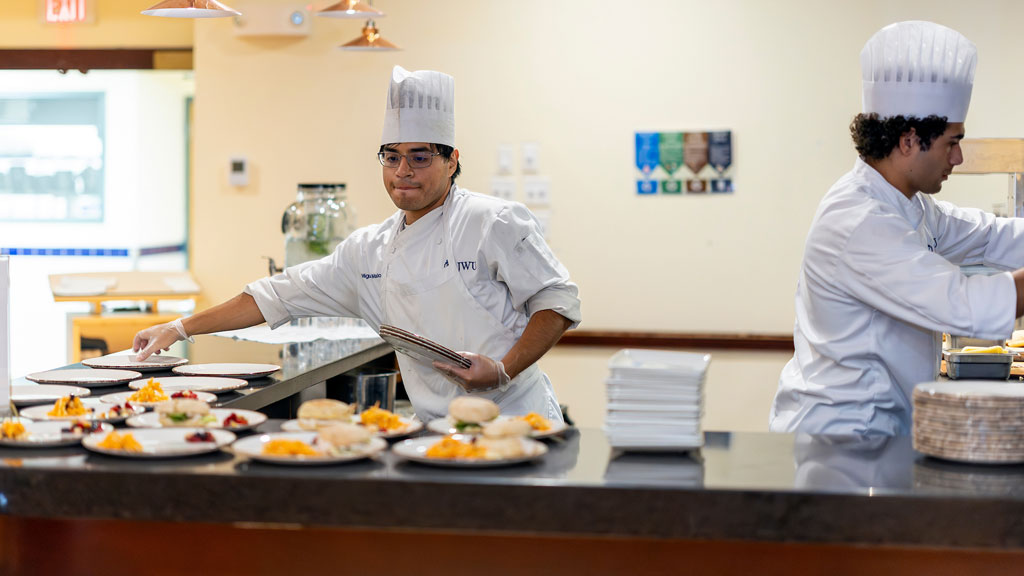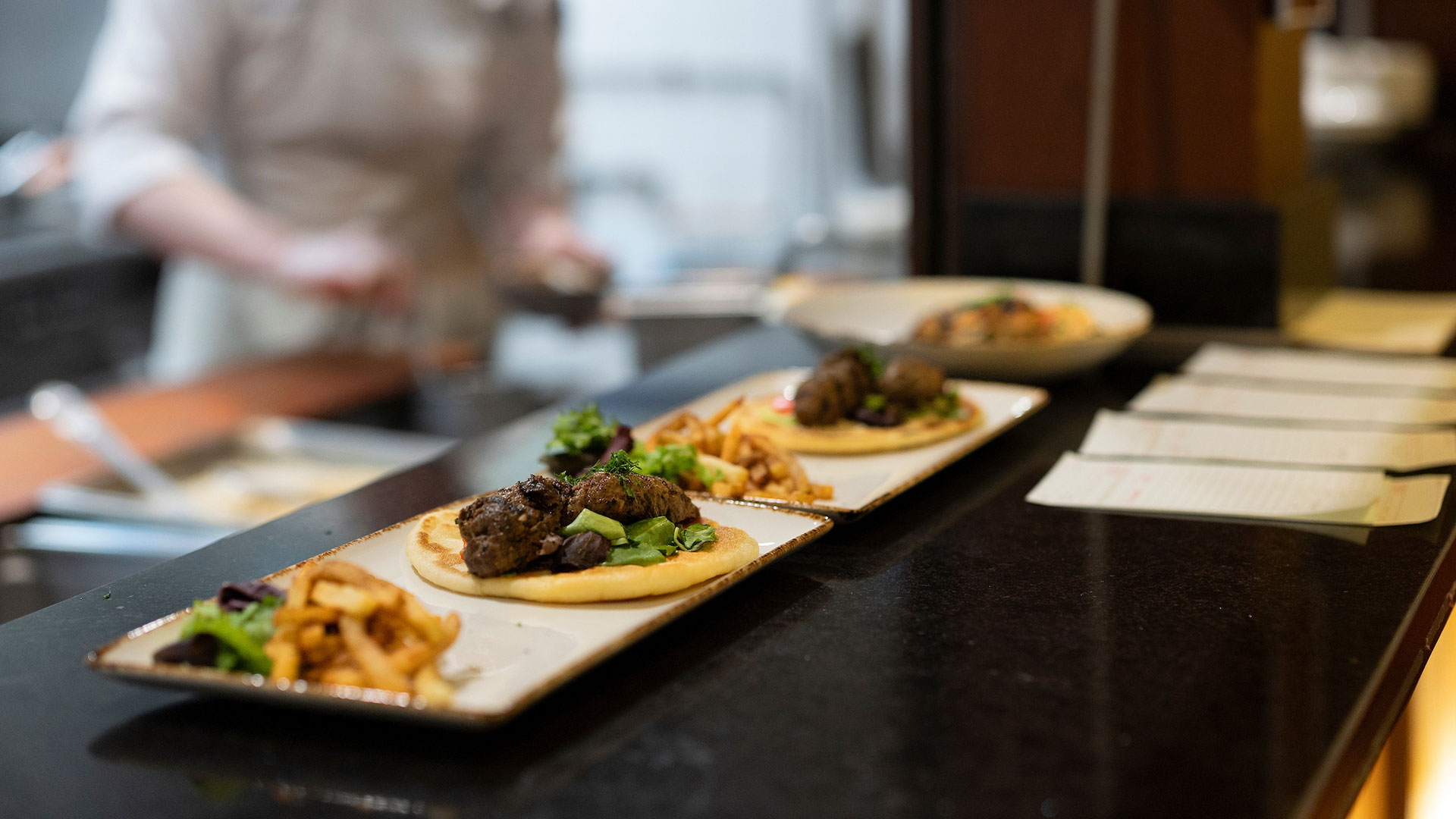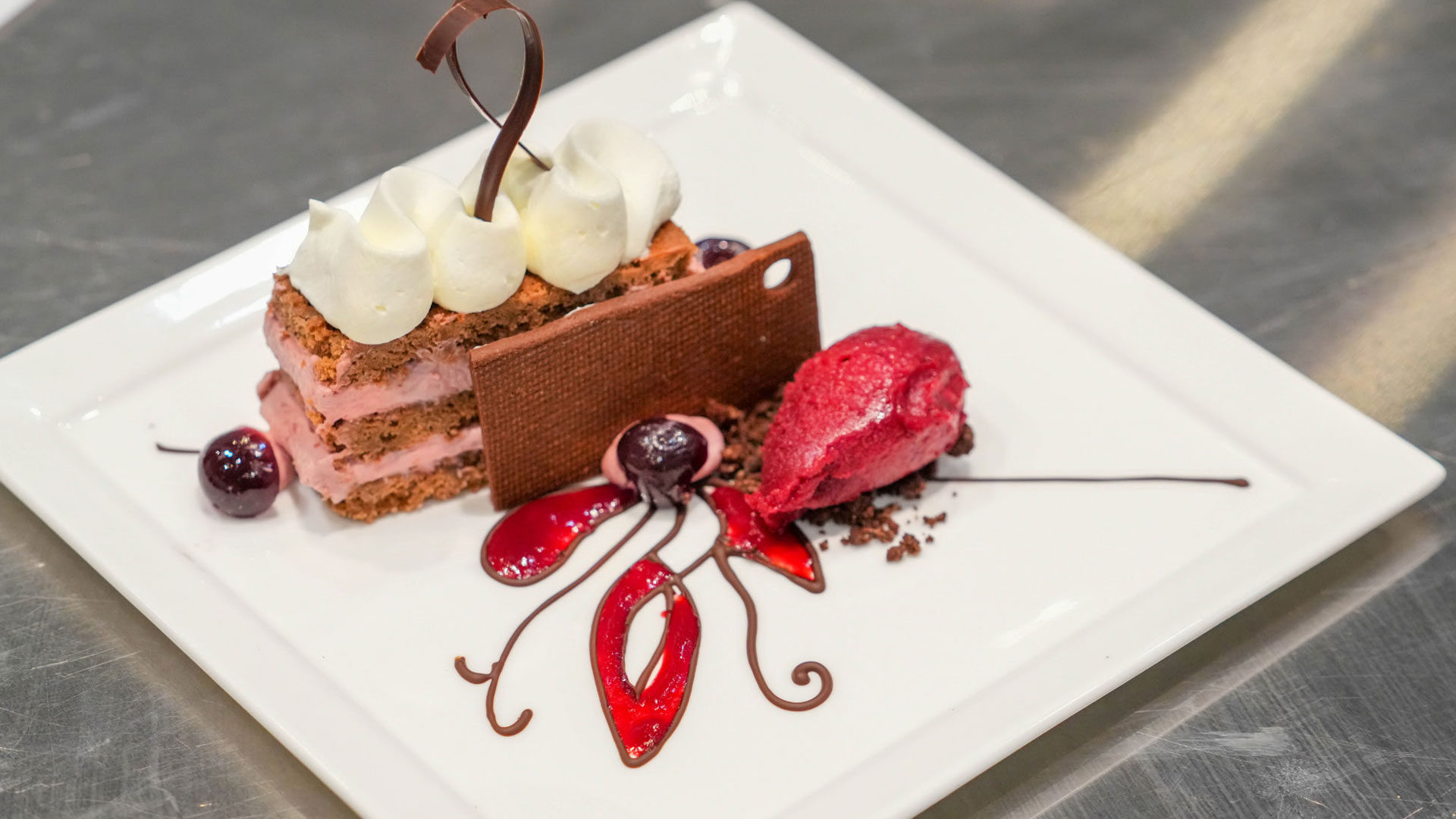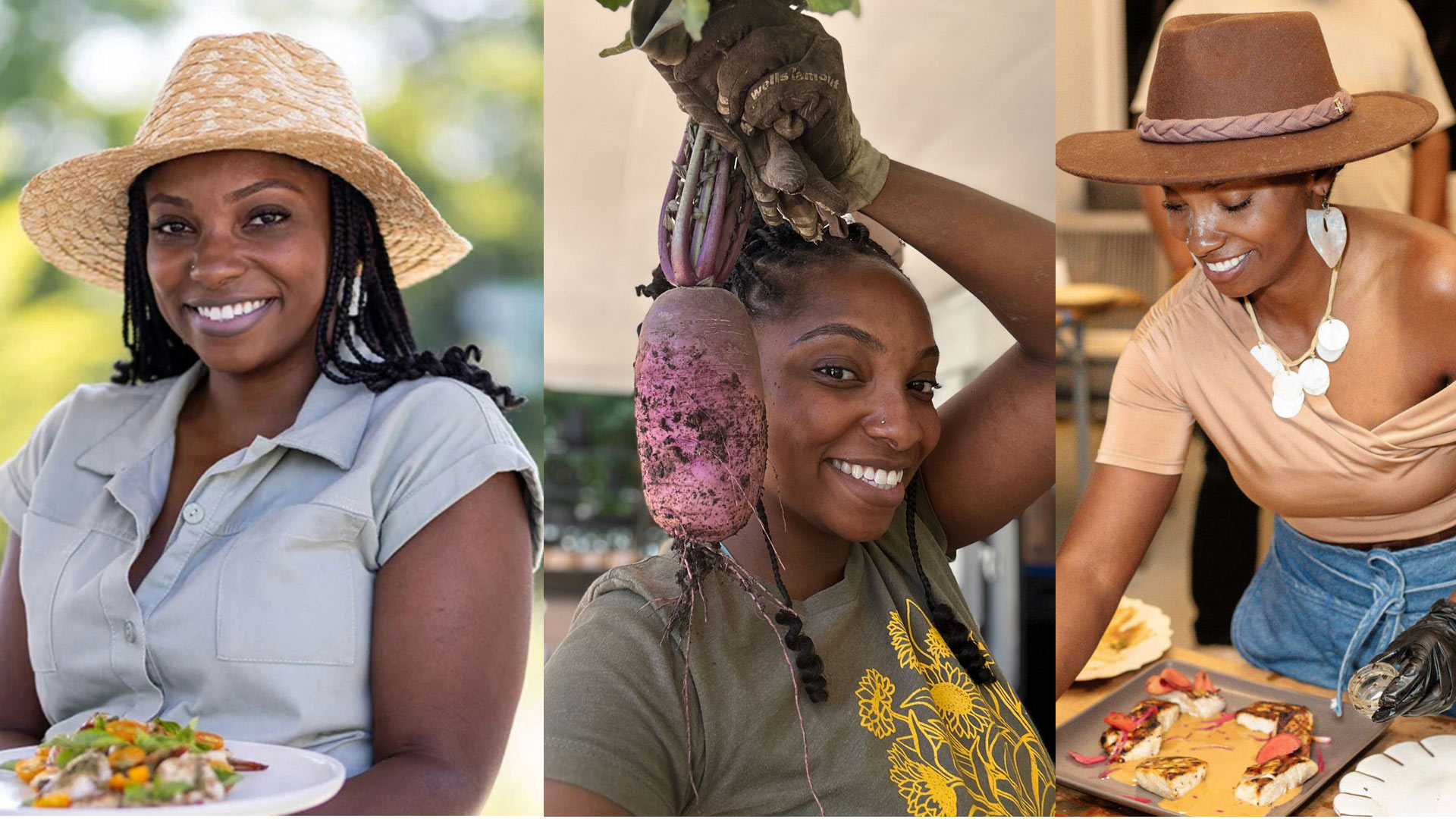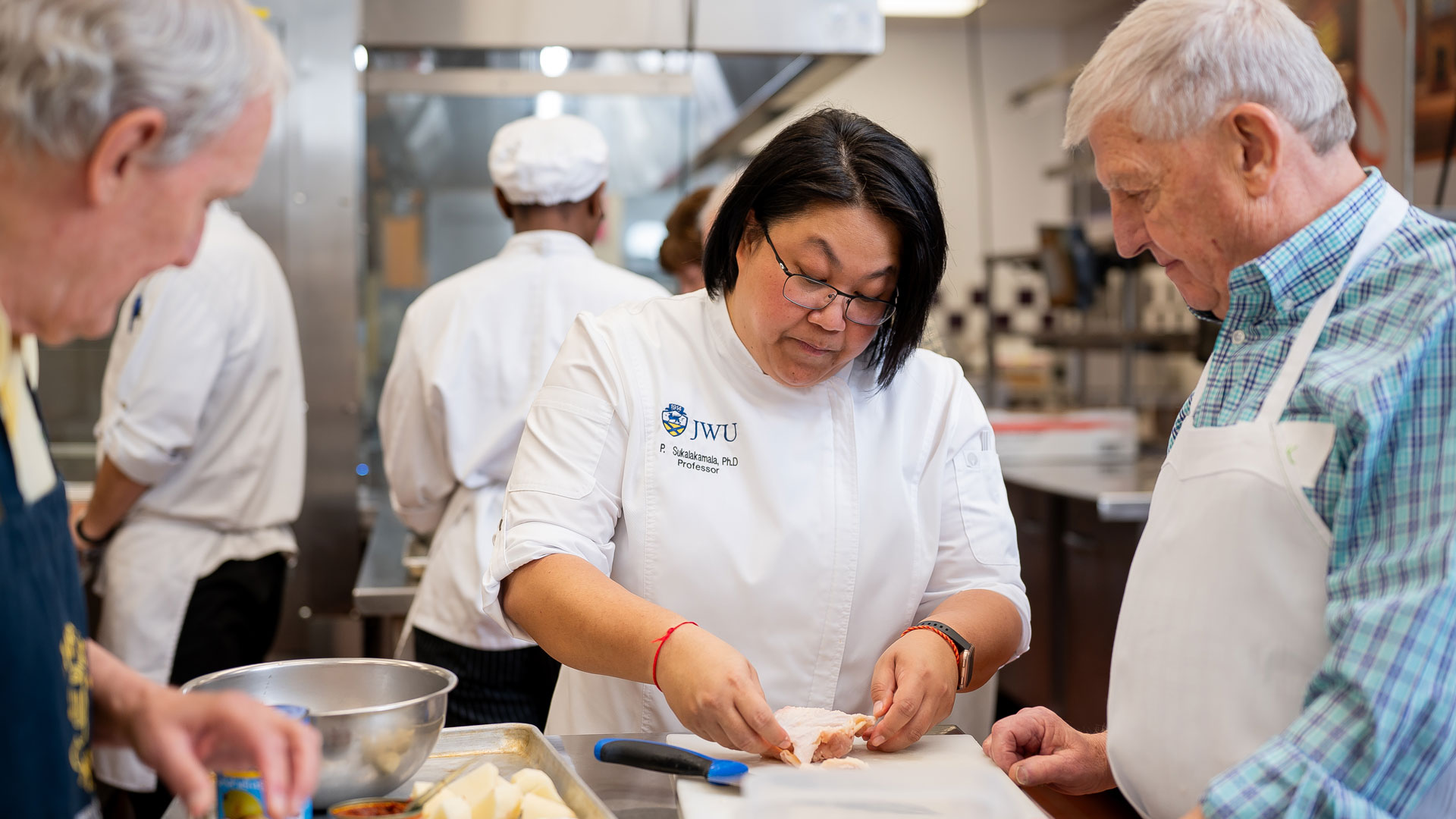How JWU Chefs & Students Are Supporting a New USDA-RIDE Grant
Research has linked elementary school meal participation to improved nutrition, attendance and academic performance, among a host of other positive outcomes. Now, a shared Team Nutrition Training grant between the USDA and the Rhode Island Department of Education (RIDE) is aiming to improve the availability of culturally relevant food items in school cafeterias — and JWU’s College of Food Innovation & Technology (CFIT) is assisting with hands-on training and expertise.
‘Students Take Charge’
JWU has been working with RIDE for a few years as part of an initiative called “Students Take Charge,” where K-12 students submit their own recipes for possible inclusion in cafeteria menus. As CFIT Dean Jason Evans explains, “The idea is, ultimately, that the foods served in the cafeterias are more culturally representative of the actual student population.”
As part of the grant, which runs through the end of 2026, JWU’s involvement has focused on developing and delivering training to school food service staff, many of whom are employed by Chartwells and Sodexo. This past August, JWU hosted its second on-site training, which centered around recipes and techniques designed to boost flavor without raising sodium levels.
“Over time, JWU is really contributing to kind of the playbook that these food service management companies are using when planning their menus.”
During the August workshop, a CFIT faculty member broke down the student demographic mix of Rhode Island’s school districts. Subsequently, the chefs worked with a mix of North African, Caribbean and Peruvian recipes inspired by students’ “Take Charge” suggestions.
Another crucial aspect of the grant is to look at ways to maximize the school districts’ tight budgets and narrow purchasing constraints. As Dean Evans puts it, “[The grant] is looking at the actual commodities that these school districts tend to have low-cost access to through the USDA. So, it’s not just about putting better food on the tray — it’s about better food within the really tight budget parameters [they] work with.”
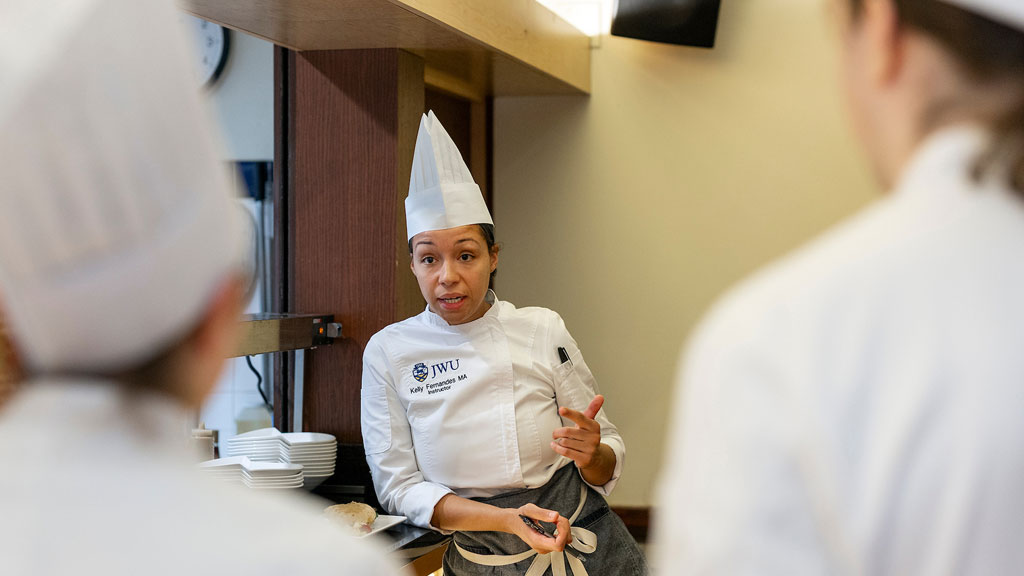
Corporate Dining Goes Back to School
Instructor Kelly Fernandes teaches Corporate Dining Concepts (CUL3141), which focuses on high-volume cooking. When she heard about the grant, she knew it would be a perfect fit for her class, which helps transition culinary students to fast-paced, team-based work requiring multiple stations, with multiple items being worked on in parallel. The central challenge of the class boils down to, as she explains it, “You have six hours within the day to develop a menu that maybe has 12 items on it. And you must do this in large quantity. It’s a different approach to skillset and time management, and requires cooperation not only within the group, but between the groups, like knowing when to speak up and say, ‘I’m behind the eight ball. Can you assist me here?’”
Cooking for an elementary school audience adds another level of complexity. To help her students rise to the challenge, Fernandes asked them to share their own school lunch memories: “Most of them went to public school. They recalled how bad their food was and what they would have liked to have eaten.”
In addition, she shared a list of the top 50 communities found within Rhode Island, and a selection of recipes from K-12 students “as a kind of guideline, so they can get an understanding of what these kids are looking to eat. I gave [the students] creative freedom to use their ideas to create the menu and make it kid friendly.”
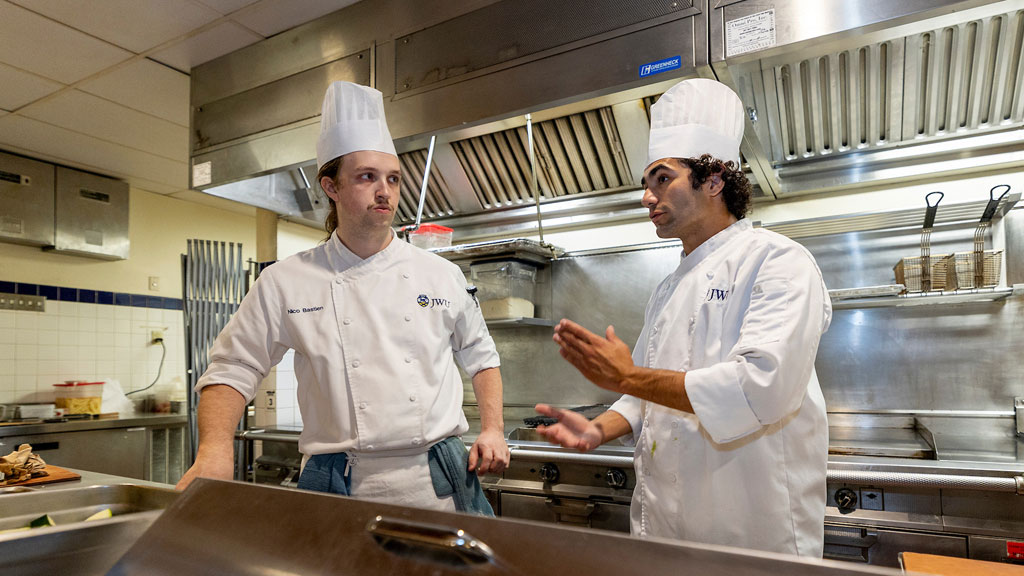
Creating a Cohesive Menu
Fernandes’ class broke into five groups that presented their kid-friendly menus during a series of pop-ups in early October. Their production menus drew inspiration from the state’s cultural diversity — while following nationally-set budget and nutritional guidelines. (All Rhode Island school meal programs must adhere to federal guidelines for kCal, sodium, sugar, and trans-fat levels. In addition, each menu cycle must offer at least four menu items, including deli, grill, bowl and soup/salad, within a strict budget — not an easy task.)
All the groups were given three days to practice and refine their menus, assessing them for several factors, such as:
- Do the pairings work? Does the texture work?
- Is it kid friendly?
- Does the execution work?
- Can you efficiently execute 15 portions in one shot?
The practice sessions gave the groups the opportunity to make tweaks for the elementary school palate, said Fernandes: “If they make something that’s a little too spicy, I said, ‘You’re not feeding adults, you’re feeding kids. Yes, we love spice as adults, most of us, but not as a kid.’ They’ve had to check back into reality a bit.”
“You have six hours within the day to develop a menu that maybe has 12 items on it. And you must do this in large quantity. It’s a different approach to skillset and time management.”
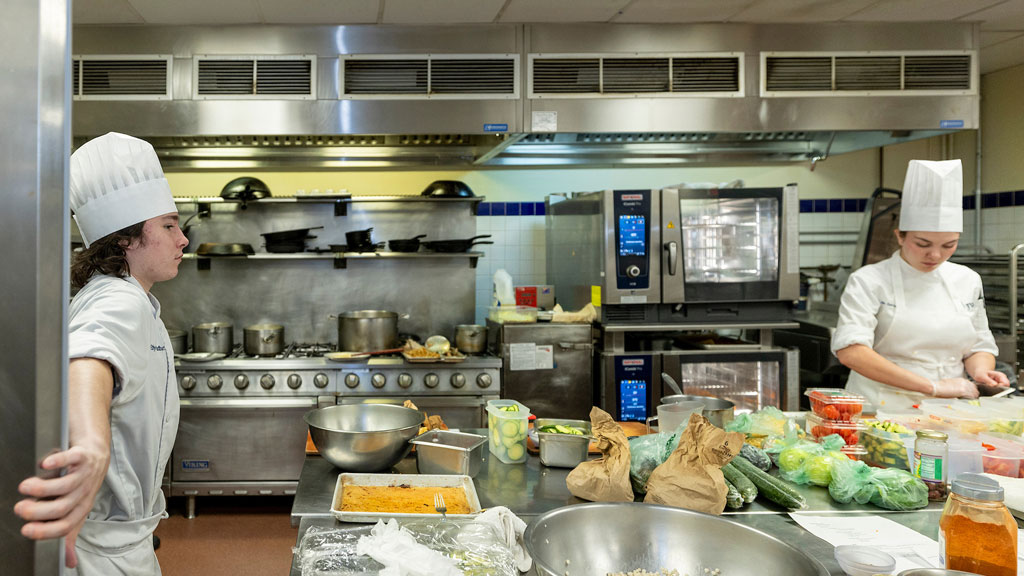
High-Stakes Pop-Up
 Practice is one thing, but executing a real-time pop-up to serve faculty, staff and students is the class’ crowning challenge. Each group was tasked with making enough food to feed 90 guests at their pop-up, which worked out to roughly $5.50 per guest (just slightly more than the federal allotted budget).
Practice is one thing, but executing a real-time pop-up to serve faculty, staff and students is the class’ crowning challenge. Each group was tasked with making enough food to feed 90 guests at their pop-up, which worked out to roughly $5.50 per guest (just slightly more than the federal allotted budget).
The HAL1 kitchen was packed with two groups: The first worked against the clock to create their pop-up dishes, while the second prepped for their pop-up later in the week. The space effectively became a high-stakes obstacle course as students juggled multiple tasks and limited space in which to execute them. As they worked through their detailed prep lists, Fernandes graded them on time management, the tidiness of their prep and overall cleanliness of their stations, as well as their food safety logs.
The pop-up menu was very ambitious:
- Jicama, mango and cucumber salad with chili-lime vinaigrette
- Black bean, quinoa and mixed greens salad with creamy avocado vinaigrette
- Roasted corn and poblano soup
- Roasted veggie and chickpea rice bowl with tahini dressing
- Korean rice & veggie bowl with marinated pork and gochujang
- Two grill plates (lemon-herb chicken with couscous salad and lamb kofta with za’atar fries)
- Turkey and apple sandwich with baby spinach and honey mustard
- Pistachio cannoli with an orange-ricotta filling
Fernandes circled through the kitchen and front-of-the-house, offering advice and doing her best to keep everyone on track. “Strain that stock!” she told one student. To another: “Microplane that garlic — nobody wants to bite into raw garlic!” As she took a brief break from overseeing the front-of-the-house setup for service, she explained, “I don’t expect perfection. But I want to see enough critical thinking to say, ‘Let me test this.’ They’re also learning that they don’t move as fast as they think they do.”
Julia Sarfde '27, a Culinary Arts major who set up the elaborate salad station, noted that she might have “overdone” her prep. (She put out roughly 15 different mix-and-match components to enliven the two salads she was assembling and dressing to order.) She admitted she would have liked more time for her setup, although her salad setup looked crisp, fresh and inviting.
Although service started late, the student guests were thrilled to try food made by their peers. One guest asked, “Can we take home one of everything?”
View this post on Instagram
‘A Powerful Trajectory’
With the grant running through 2026, Dean Evans is hoping to continue JWU’s involvement via training and recipe development. He envisions on-site training and more classes like Chef Fernandes’ developing their own slate of recipes: “We’ve got these recipes then coming out of our in-house workshops, the onsite workshops, and coming out of the students and their class projects, so that over time, JWU is really contributing to kind of the playbook that these food service management companies are using when planning their menus.”
For students, the grant demonstrates the real-time importance of having the guidance of professional chefs in what has traditionally been an institutional space. “For students that really want to have a career in food that has potential for very large impact on nutritional outcomes, how people end up thinking about food their entire lives, school food service is a powerful trajectory,” notes Dean Evans. “Any way we can expose students to this particular world supports our larger message of the importance of food-related careers.”
Apply to JWU Transfer Plan a Visit
Below and top: Scenes from the Corporate Dining Concepts pop-up.
